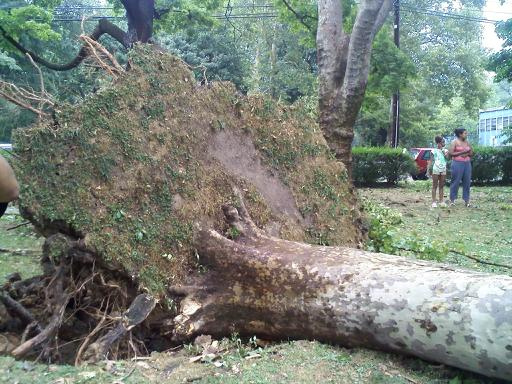The more accurate version of this question would really be something like, "Why do
some
trees fall over in a storm while others stay standing?" The answer is
more complex than a simple distinction between old, rotted, and weak vs.
young, healthy, and strong. Instead, writes Mary Knudson at Scientific
American blogs, trees fall because of their size, their species, and
even the history of the human communities around them.
“Trees most at risk are those whose environment has
recently changed (say in the last 5 – 10 years),” Smith says. When trees
that were living in the midst of a forest lose the protection of a rim
of trees and become stand-alones in new housing lots or become the edge
trees of the forest, they are made more vulnerable to strong weather
elements such as wind.
They also lose the physical protection of surrounding trees that had
kept them from bending very far and breaking. Land clearing may wound a
tree’s trunk or roots, “providing an opportunity for infection by wood
decay fungi. Decay usually proceeds slowly, but can be significant 5-10
years after basal or root injury.” What humans do to the ground around
trees — compacting soil, changing gradation and drainage “can kill roots
and increase infection,” Smith warns.


No comments:
Post a Comment